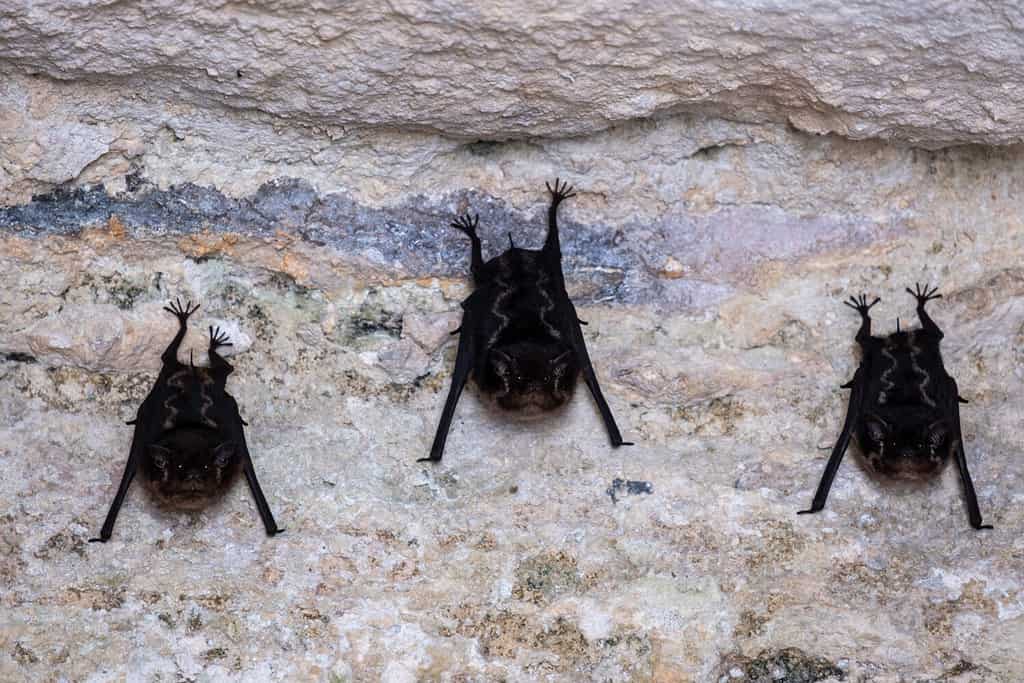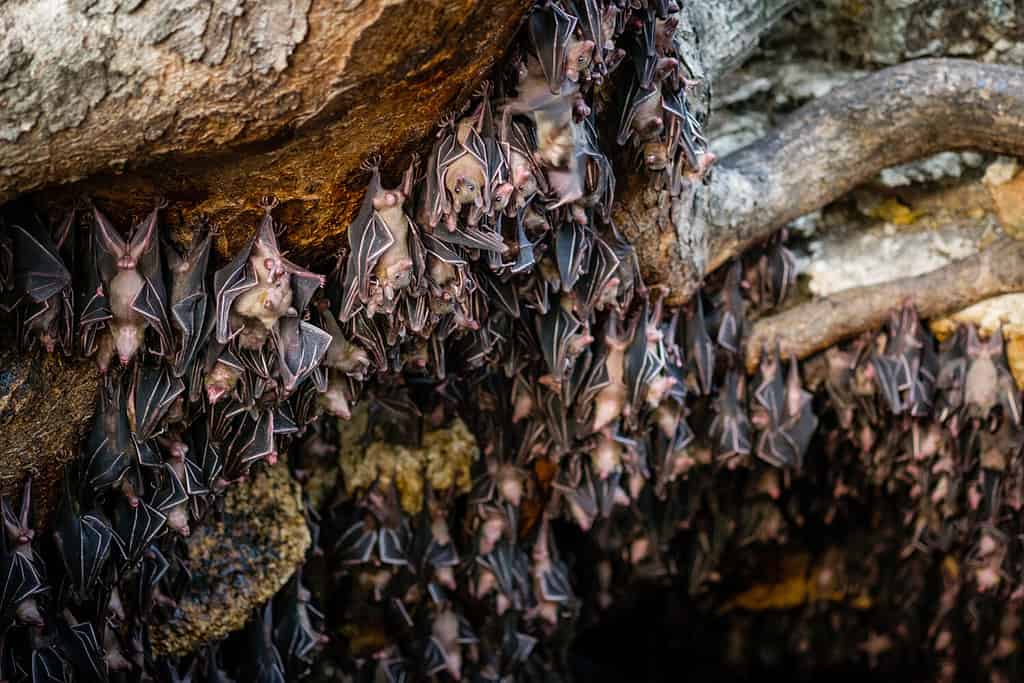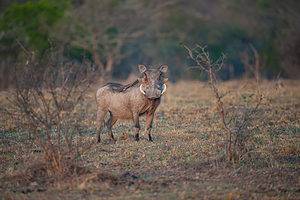The only flying mammal found worldwide is the iconic bat. Bats are social mammals that live in groups and are nocturnal, meaning they’re mostly active at night. Thankfully, they aren’t noisy creatures who squawk or crow, so the sounds bats make aren’t considerably loud sounds or keep you awake.
This cute yet mischievous animal is often associated with spooky themes such as Halloween. Many people assume bats are blind, but in reality, their sensitive vision simply allows them to see in pitch-black conditions.
While these mammals are typically quiet, they do sometimes make recognizable sounds. Here are three distinct sounds bats make and what they mean.
1. Flutters

Did you know there are 1300 species of bats in total?
©LP Production/Shutterstock.com
A typical bat sound you might hear is fluttering. Bats will flutter their wings when attempting to move through the air or gain height. Like birds, when bats fly through the air, their wings often cause a fluttering sound that humans can hear within proximity. In fact, many homeowners will hear fluttering in their walls or attics if there is a bat infestation.
2. Chirps or “Clicks”

Most bats feed on moths, beetles, flies, and other insects.
©MilletStudio/Shutterstock.com
Bats make an ultrasonic noise that’s often hard to hear by humans. This squeaking or chirping sound, which might resemble more of a clicking noise, is actually a form of echolocation. This helps the bat hunt for nearby insects, as it bounces the sounds off their bodies and helps them communicate with other bats.
A bat’s echolocation produces sound waves that vibrate at frequencies above human hearing — between 11kHz and 212kHz. However, When humans hear these chirps, they typically sound more like small clicks.
3. Scratches

Bats are the only mammals that can fly.
©Sarun T/Shutterstock.com
If a bat is trapped in your walls or attic, you might mistake them for mice. They tend to make small scratching sounds when they use their wings or hands to climb and crawl about. These sounds might be quiet and soft, but if they’re especially active — like during nighttime — they could become quite pesky.
The photo featured at the top of this post is © NPGallery / CC0 – License / Original
Thank you for reading! Have some feedback for us? Contact the AZ Animals editorial team.






